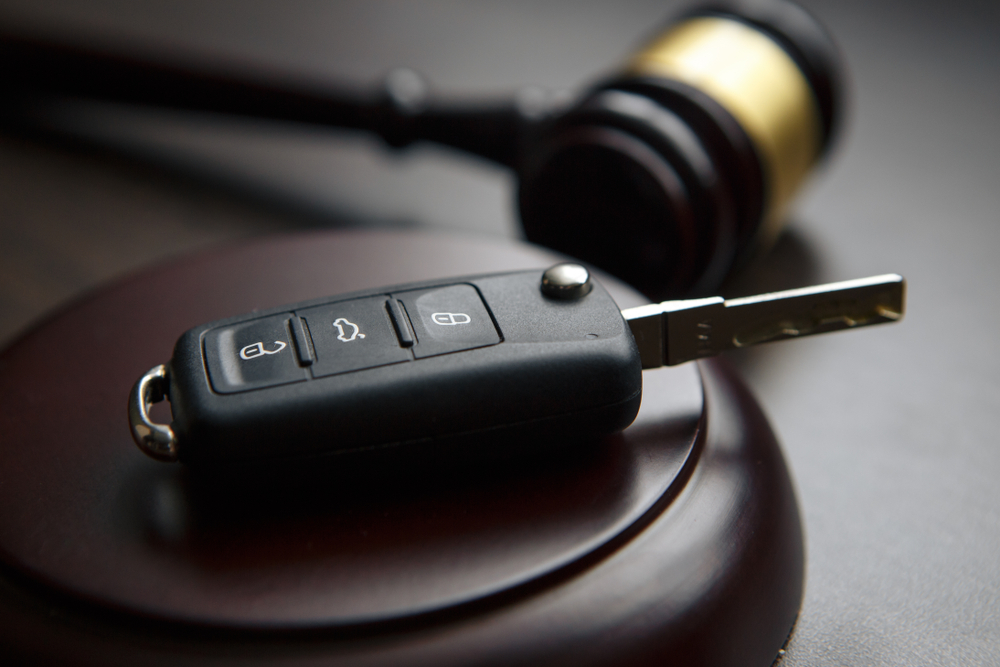People who are filing for bankruptcy can often be aware of some of the consequences of filing, such as bankruptcy causing severe damage to a person’s credit for anywhere between seven and 10 years. Another major concern many people have is the possible loss of their personal property.
A car is one major piece of property that many people own and rely on, so there is an incredible fear many people have about losing their motor vehicle. There are several factors that will dictate what happens with your automobile in bankruptcy.
Keeping a Car When Filing For Bankruptcy in Arizona
Many creditors are going to view motor vehicles as being assets people own, so they can be a natural target in many bankruptcy cases. In Arizona, every debtor can retain one motor vehicle with equity, provided that the vehicle does not have more than $6,000 of equity.
A disabled debtor will get a $12,000 exemption instead of $6,000, and people who have two vehicles with a combined equity of less than $6,000 cannot spread the $6,000 exemption to multiple vehicles. When a person is married, each spouse gets one vehicle so long as each vehicle does not have more than $6,000 of equity or a married couple can “stack” both of their $6,000 vehicle exemptions on one vehicle and exempt a single vehicle if it does not have more than $12,000 of equity.
In general, the ability to keep a car in bankruptcy will depend on whether you are filing for Chapter 7 or Chapter 13, whether you own, lease or are still financing your vehicle, the value of your vehicle, and your possible exemptions.
Cars in Chapter 7 Bankruptcy in Arizona
While Chapter 7 often allows people to completely discharge all of their debts without having to repay anything extra, the catch is that many people will also have to forfeit some of their property. Certain assets, such as motor vehicles, may be used to pay a person’s debts.
The bankruptcy exemption will again come into play in these cases, so people may be able to exempt $6,000 or $12,000 from their car in these cases. When people are able to exempt all of their equity in a motor vehicle, then they can keep their cars.
Determining equity in a car involves subtracting the current loan balance from the car’s value. All motor vehicles depreciate very quickly, so many people will not have much equity unless they are near the end of their loan term.
When equity is less than the exemption limit, a person can keep their car. If the equity exceeds the limit, then people could still have options.
A trustee could sell a vehicle, give a person the exempted amount, and use the remainder to repay creditors. The trustee could also give a person the option to pay off the equity at a discount in order to keep their car.
If a person has fallen behind on their vehicle loan payments, a lender could repossess the car. The vehicle will not be protected by the exemption if the loan attached to the vehicle is delinquent, but a person could be able to keep the car by paying the remainder of the loan in one lump sum, or by reaffirming the loan, which allows them to modify it and get back in good standing.
A person will also have the option of surrendering their vehicle to a lender, which will remove their responsibility from the auto loan after bankruptcy. Doing this will also mean a person will not have a vehicle and there will also be credit consequences similar to repossession.
It is possible in some Chapter 7 cases that trustees may allow people to pay for their nonexempt equity at a discount through a person borrowing money from their friends or family members, taking out a high-interest loan, or making payments with post-bankruptcy income over time. Taking out another loan while preparing to file for bankruptcy is generally not recommended.
Cars in Chapter 13 Bankruptcy
Chapter 13 will work much differently from Chapter 7, because instead of liquidating non-exempt assets to repay creditors, a person enters a debt repayment plan that lasts three to five years. The property will not be sold off in Chapter 13 bankruptcy, as a person’s finances are instead reorganized so they can begin repayment.
When people own their cars outright, they will be able to keep them. When people file for Chapter 13 bankruptcy, their debt will be grouped into three groups:
- Priority debts: Debts that must be repaid in full, such as bankruptcy costs, unpaid tax bills from the past three years, and child and spousal support.
- Secured debts: Debts that often include auto loans. People who have loans on their cars may have the amount owed reduced in Chapter 13 if they owe more on a car than it is currently valued. People can qualify for a repayment plan and get caught up on their loans to keep vehicles.
- Unsecured debts: Debts that will be discharged after a person completes their repayment plan.
If a person cannot catch up on their auto loan or cannot afford repairs or payments on the car, they can get out of payments by surrendering the car back to the lender. Doing this will carry certain credit consequences, however.
If a person signs a reaffirmation agreement and decides they do not want to keep their car, they can rescind or cancel the agreement. They will need to do this within 60 days of signing the agreement or before the court gets involved with a discharge, whichever occurs later, and a person will not have to pay for the vehicle if they rescind and return it in time.
Contact Our Arizona Bankruptcy Law Firm
If you have concerns about keeping your car when you file for Chapter 7 or Chapter 13 bankruptcy in Arizona, make sure you are working with an experienced attorney who can help you protect the assets that are most important to you. DebtBusters can immediately step in and help you take all of the necessary actions to ensure that you do not lose the items most important to you.
Our firm understands how stressful the bankruptcy process can be for people, and we work closely with all of our clients so they always know and understand all of their rights in these cases. You can call (866) 223-4395 or contact us online to set up a free consultation with our Arizona bankruptcy law firm.







